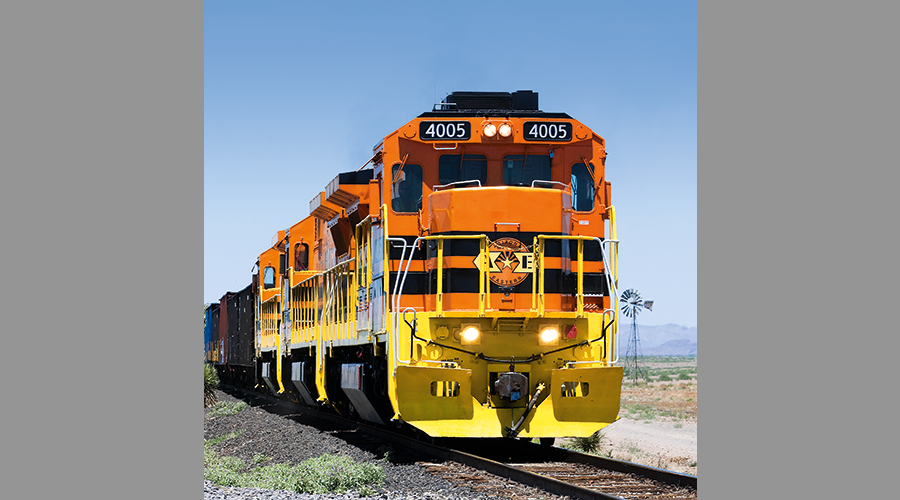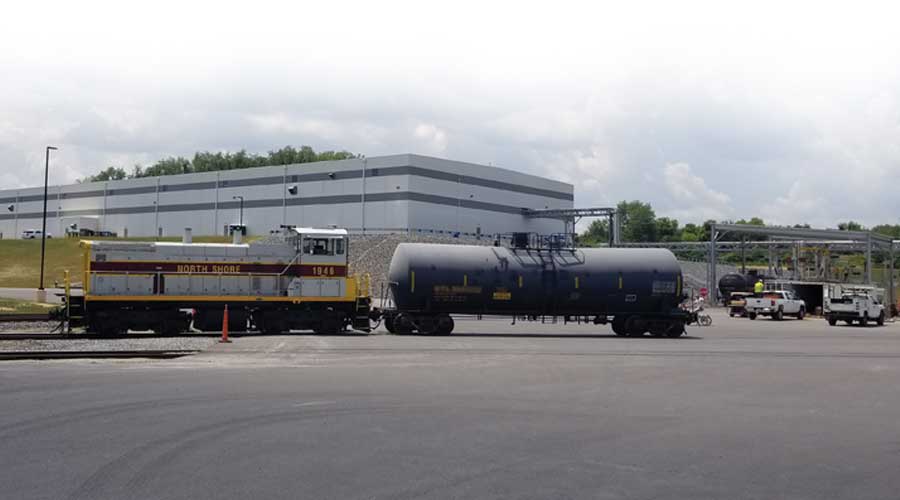Stay updated on news, articles and information for the rail industry
December 2010
Part 1 : Rail Outlook: 2011
Class I Outlook: 'Year of Opportunity'
Part 4 : 'Certainty is what drives investment' — AAR's Ed Hamberger
Part 5 : Short-Line Outlook 2011
Passenger Rail Outlook 2011 - 'Still a Little Tenuous'
High-Speed Rail: In flux in 2011
Part 8 : Rail-Car Deliveries in 2011
Rail News: Short Lines & RegionalsShort-Line Outlook 2011
— by Jeff Stagl, Managing Editor
As of mid-November, 2010 was turning out to be a good year for short lines. Carloadings were up more than 10 percent — and as much as 35 percent in some cases — compared with 2009 levels, according to the American Short Line and Regional Railroad Association (ASLRRA).
"Some short lines have done extremely well, depending on the market segments they serve," says ASLRRA Vice President Steve Sullivan.
Regional Rail L.L.C., which owns and operates the East Penn and Middletown & New Jersey (M&NJ) railroads, had registered a 35 percent to 40 percent gain in carloads and a 30 percent jump in revenue as of mid-November.
"We found records that go back 10 or 11 years, and some months this year were the best [the railroads] ever had," says Bob Parker, president and chief executive officer of Regional Rail, which acquired East Penn in 2007 and M&NJ in 2009.
Arkansas & Missouri Railroad Co.'s (A&M) traffic was "extremely weak" in the first quarter, then began to recover in the second quarter, says A&M Chairman Reilly McCarren. Next year, he expects the short line's traffic to rise incrementally.
"The consensus is the economy will recover more gradually than one would like, and we concur," says McCarren.
A&M will gain a traffic boost from two new metal recycling facilities, one of which is partially open and one that's set to open in second-half 2011, he says.
Regional Rail is anticipating moderate traffic and revenue growth, perhaps in the 5 percent to 10 percent range. A few drivers will be a continuing uptick in ethanol carloads and boost in Class I interchange traffic, says Parker.
A Taxing Situation
While keeping one eye on the economy, short-line industry executives plan to keep the other on one of several lingering challenges — none bigger than convincing Congress to extend the short-line tax credit. As of press time, an "extenders" bill still hadn't been passed by legislators that would have extended the tax credit — which helps fund more than $300 million in short-line infrastructure improvements annually — through calendar-year 2010.
ASLRRA's Sullivan believes the extenders bill will pass by year's end. The association then will lobby for another one-year extension and seek a multi-year extension through a surface transportation reauthorization bill or some other measure, he says. The power shift on Capitol Hill could be an asset.
"The new Congress appears to be open to big-business and small-business arguments, and more pragmatic," says Sullivan.
The new political landscape also might mean fewer new federal regulations for small roads. The Rail Safety Improvement Act of 2008 led to 90 new regulatory issues for the short-line industry, some major — such as positive train control — and some minor, like bookkeeping changes, says Sullivan.
"With the onerous regulations, we could spend all of our time on compliance instead of on growing the business," says Regional Rail's Parker.


 LRW Honors Amtrak’s Acheson As Railway Woman Of The Year
LRW Honors Amtrak’s Acheson As Railway Woman Of The Year
 From Editor-In-Chief Foran: Of Gender Equity And Inclusion
From Editor-In-Chief Foran: Of Gender Equity And Inclusion
 Spotlight On Some Of Today’s Rail Safety Products
Spotlight On Some Of Today’s Rail Safety Products
 Women of Influence in Rail eBook
Women of Influence in Rail eBook
 railPrime
railPrime







